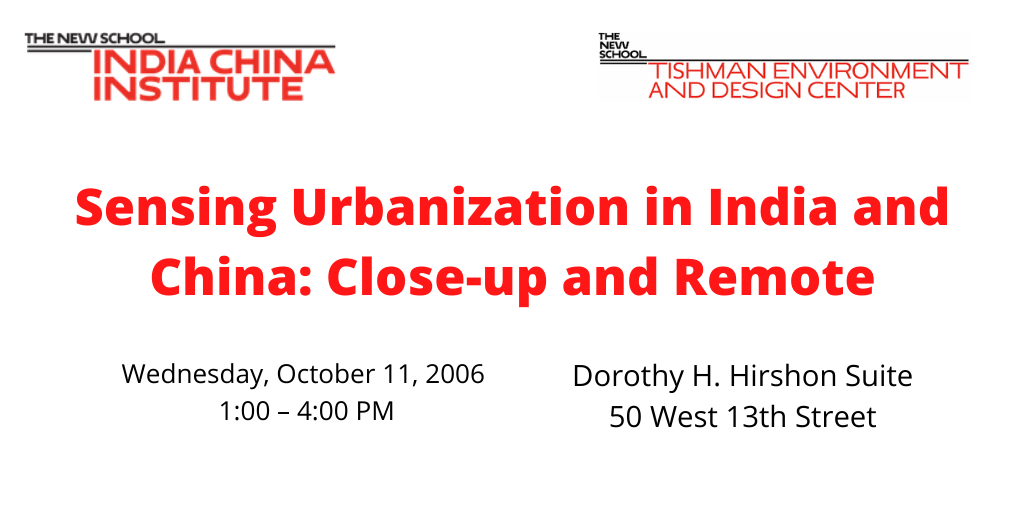
Sensing Urbanization in India and China: Close-up and Remote
October 11, 2006 , 1:00 pm – 4:00 pm

The India China Institute and the Tishman Environment and Design Center present:
Sensing Urbanization in India and China: Close-up and Remote
A workshop which will explore the question: How can remote sensing technology connect to local actors and decision makers on the ground?
Moderator: Grahame Shane, author of Recombinant Urbanism
Presenters: Remote and Close-up
Christopher Small, Lamont Daugherty Earth Observatory
Colleen Macklin, Chair, Design and Technology, Parsons
Presenters: How to fill the Gap?
Sarah Williams, Director of the Spatial Information Design lab at Columbia
Victoria Marshall, Till and Brian McGrath, ICI Faculty Fellow
Cities in the Long 21st Century
This century begins with half of the world, for the first time in history, living in urban areas with much of the rest somehow plugged into the global telecommunications net. How will our global urban society collectively navigate the long, turbulent 21st century of systemic change? What role will cities as incubators of knowledge, creativity and sociability take in shaping critical environmental choices in the future? Since this century will witness the final elimination of any wild, rural or subsistence agricultural life on the planet, many fixed ideas about the relationship between cities, nature and society need to be challenged. The exhaustion of both new labor markets and natural resources means that industrial and economic expansion cannot proceed along the 19th and 20th century trajectory, and new productive paradigms must be invented. This century’s challenge is to create an urban society that is more socially equitable and better able to manage natural resources repairing the social and environmental damage caused by the first centuries of global capitalism. How can India and China, the largest and fastest developing countries, lead the way?
Close-up and Remote Technologies: Filling the Gap
Satellite technology brings global society two different representations of this millennial transition: telematic flows bring center and periphery together in one kaleidoscopic close-up media image of the global village. Meanwhile and remote sensing gives many of us a picture of our mixed human, vegetative and watery planet. Close-up, micro-expressions broadcast from multiple sites within the global metropolis, and the continually updated objective and remote fractal mosaic of night-light or satellite imagery from afar offer two radically different windows on the emerging 21st-century city. Can the scalar gap in these two technologies be bridged in order to offer global society the complex socio-political tools with which to design, manage and re-inhabit the planet in the coming decades? The choices we face are daunting: how to share diminishing resources within an unevenly developed world society based on the belief in the endless accumulation of capital? How can knowledge from space empower and inform decisions of local actors on the ground?
